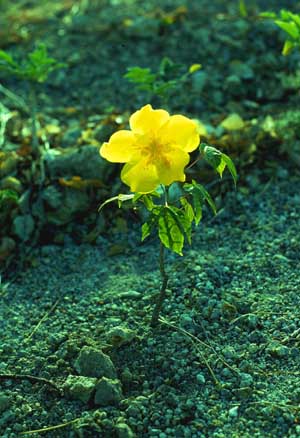|
|
 47 sapling Cochlospermum DHJanzen100815.jpg high resolution
|
|
| Early succesional trees characteristically beging to flower and bear fruit very early in life, rapidly reach a large size (on very low grade wood), and seem to invest everything in large crops of flowers and fruits, rather than building a long-lived body (and starting to reproduce at a much later age). The basic strategy is to produce a very large number of small seeds and distribute them widely, optimizing the chance that some will fall on a bare piece of ground with full sunlight (rather than a few large seeds, each of which can produce a large shade-tolerant seedling that will grow slowly toward the canopy, or survive a long time until a gap opens up overhead). Such plants are effectively running from newly created bare area to newly created bare area. This flower on a two-year old Cochlosperum vitifolium (Cochlospermaceae) sapling in the ACG dry forest will not produce a fruit but it is producing pollen, and within another 1-2 years will bear its first fruit. It will continue to invest heavily in fruit production until 20-40 years of age, and then abruptly die (though in a natural disturbance site it may well be shaded to death by other larger trees at an even earlier age, much longer lived-trees that put their resources into height and crown development rather than reproduction). | ||
back to lecture slides
or skip to: